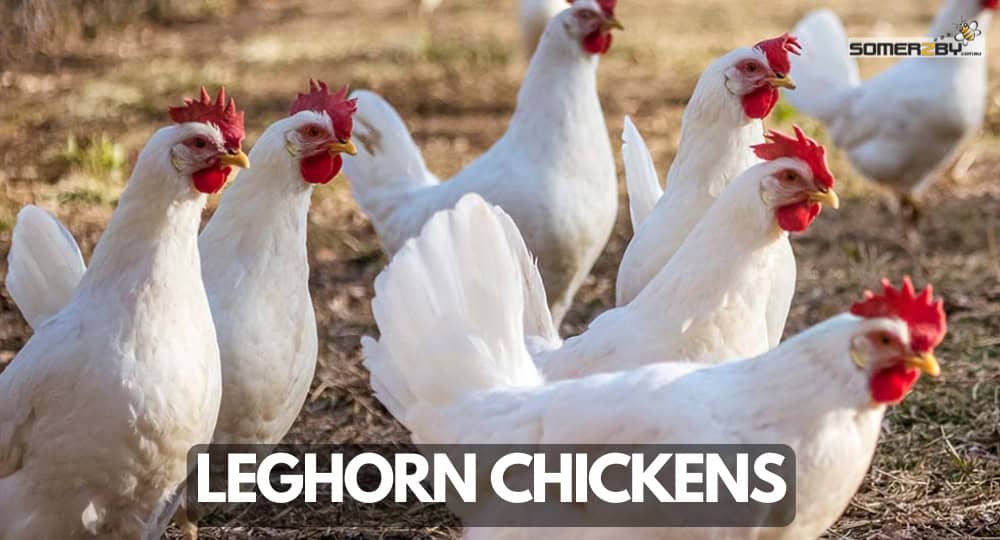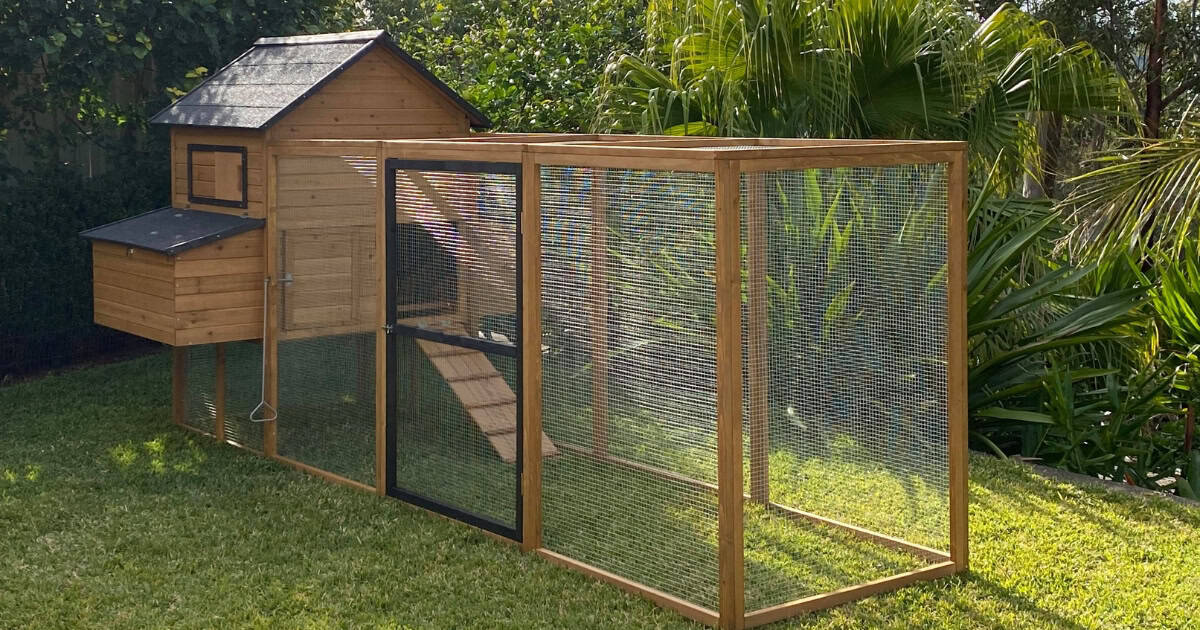Chickens, Info Guides
Leghorn Chicken – Everything You Need to Know
Leghorns are a popular chicken breed worldwide, known for their egg laying and white feathers. They are a hardy breed and are highly efficient in foraging for food.
They are not ideal family pets as they are not particularly friendly and don’t enjoy being handled. However, if you want a hen that will lay more eggs – the Leghorn chicken may be just what you were after!
Chicken Breed Profile
Leghorn chickens originated in Livorno, Italy – part of rural Tuscany. It is unknown what breeds they were created from but it is believed to be various breeds of landrace chickens.
Landrace chickens are breeds developed naturally in the wild, rather than from humans selectively breeding them. In the 1820’s, they were first exported from central Italy to the United States of America. From there, they were taken to England in the 1870’s.
The English crossed the Leghorns with Minorcas to give them a larger build and make them a more dual purpose breed. They then shipped this new, larger Leghorn back to the United States in 1910.
They were initially called ‘Italian’ chickens. Their name Leghorn was created later on, stemming from the name ‘Livorno’. Some preferred the original, smaller Leghorn as it was a more natural variety.
Meanwhile, some valued the newer, larger Leghorn for its commercial egg production abilities. The American Poultry Association first recognised Leghorn chickens in 1874.
The Leghorn chicken breed has been used to create modern day battery hens. They have been made famous by the Looney Tunes character Foghorn Leghorn.
Appearance
Leghorn chickens are beautiful birds with a narrow, long body.
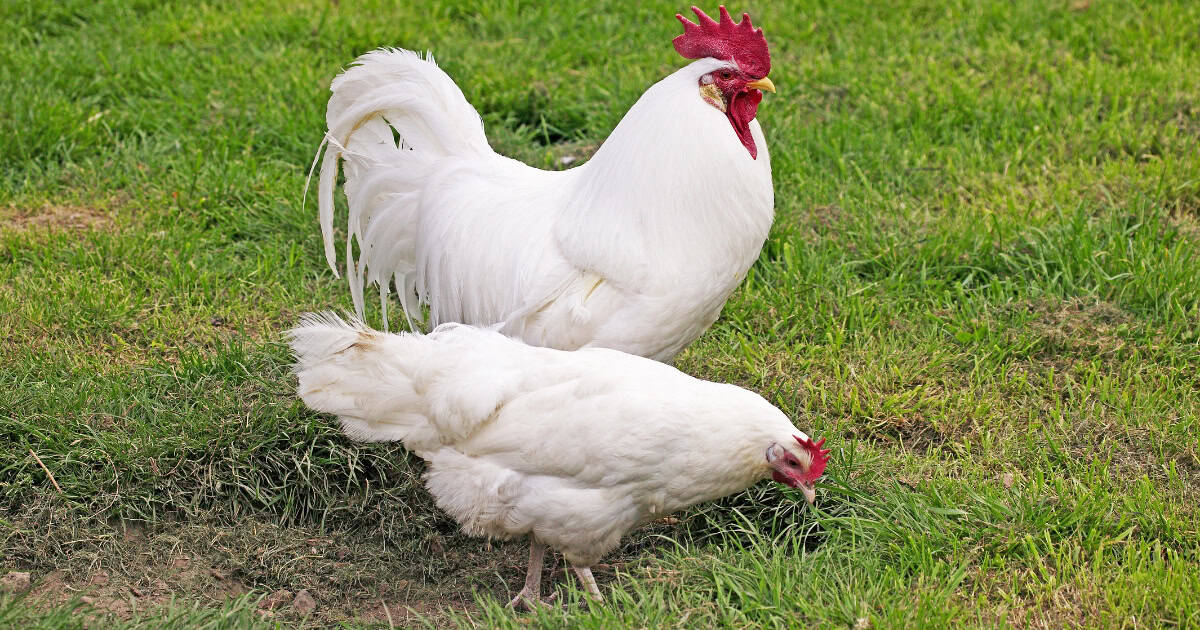
Leghorn Appearance
They have a bright yellow beak, skin and yellow legs.
They have white earlobes, which is common for birds that lay large, white eggs. They have a bright yellow beak, skin and yellow legs. They have 4 bright yellow toes on each foot. Their eyes are an orange-red.
Single or Rose Comb
Leghorns can have either a single or a rose comb. Most Leghorns are the single comb variety, with large floppy combs.
Rose combs are smaller and more popular in the United States as they are less prone to frostbite in snowy weather. Their comb and wattles are red.
Breed Size
Leghorns are a small breed that will mature quickly to become full size birds within months. They come in both standard and bantam varieties.
The standard sized Leghorn hen weighs around 2.5kg and the rooster 3.5kg. The bantam sized Leghorn hen weighs around 850g and the rooster 1kg.
Feather Colours
White Leghorns are by far the most popular feather colour. When you think ‘Leghorn’, you think ‘White Leghorn’. Many chicken enthusiasts are surprised to learn they come in multiple colours!
Leghorn varieties in Australia include:
- White Leghorns
- Light Brown Leghorns
- Dark Brown Leghorns
- Black Leghorns
- Silver Leghorns
- Red Leghorns
- Blue Leghorns
Light brown, dark brown, black and white Leghorns were the first Leghorn varieties. The other breeds were created about 15 years later.
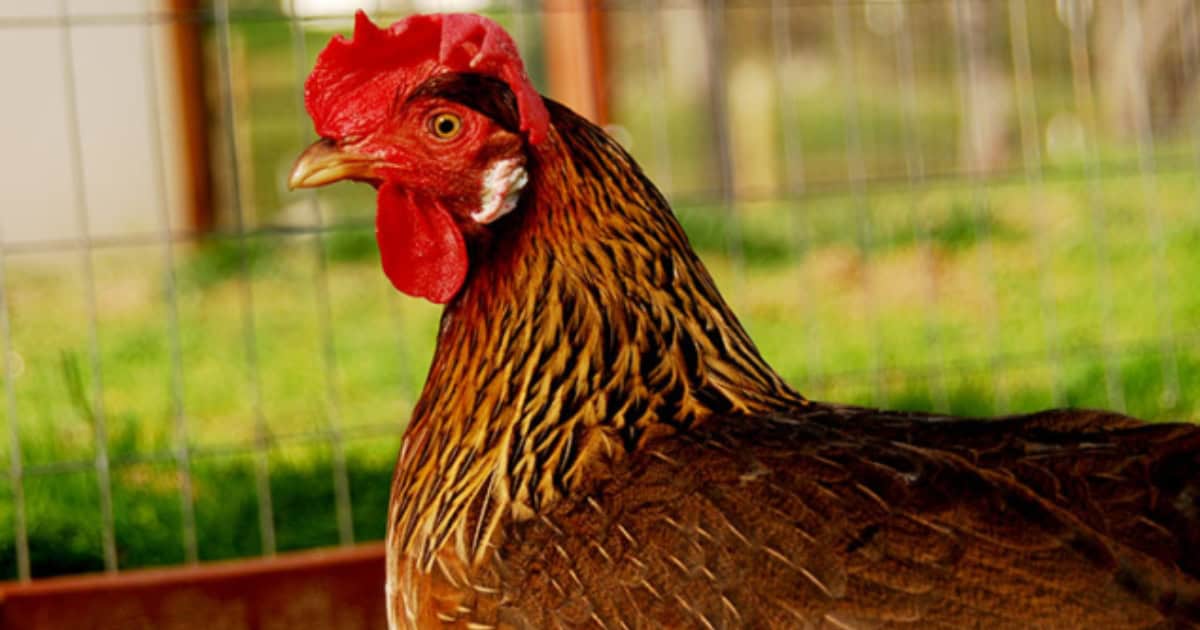
Red Leghorn Chicken
The Red Leghorn chicken is an unusual and extremely rare chicken breed.
Eggs
Leghorn chickens are great layers. They are valued for being a highly economical egg layer. They have a high feed to egg ratio, meaning they will lay a high number of eggs at a relatively low cost to feed.
Their feed costs are partly low because of their small size and partly because they forage so much of their food.
This high egg production has made them a popular choice for the commercial egg industry as well as backyard chicken keepers who are interested in selling their eggs.
Laying Age
They will usually begin laying at around four months old, which is quite early compared to some other chickens. They will continue to lay a high number of eggs for around four years.
After this, their egg production will gradually decrease until they enter their ‘retirement’ years and finish laying.
Egg Colour and Size
Leghorn hens lay white eggs. They are medium to large in size. Often, a Leghorn hen’s eggs will begin medium sized but become larger as the hen gets older.
Egg Laying
Leghorn chickens are one of the best layers. They lay between 280-320 eggs per year. That equals 5 or 6 eggs per week per hen.
This is a high number compared to some other hens and enough for any backyard chicken keeper to supply their family and friends with a steady supply of healthy, fresh eggs.
Leghorn Chickens as Pets
Leghorns can be kept as backyard pets however are not the most family-friendly breed. Not all Leghorns will be exactly the same and they will have individual personalities. However, they do share some common qualities.
The best way to determine what a Leghorn will be like is to see what its parents were like. If you didn’t raise the parents yourself, ask your breeder.
Caring For Your Leghorn Chickens
Leghorns are a very active breed. They love foraging and therefore are able to find their own food to supplement their diet. They love spending their day hunting for bugs to eat in your garden.
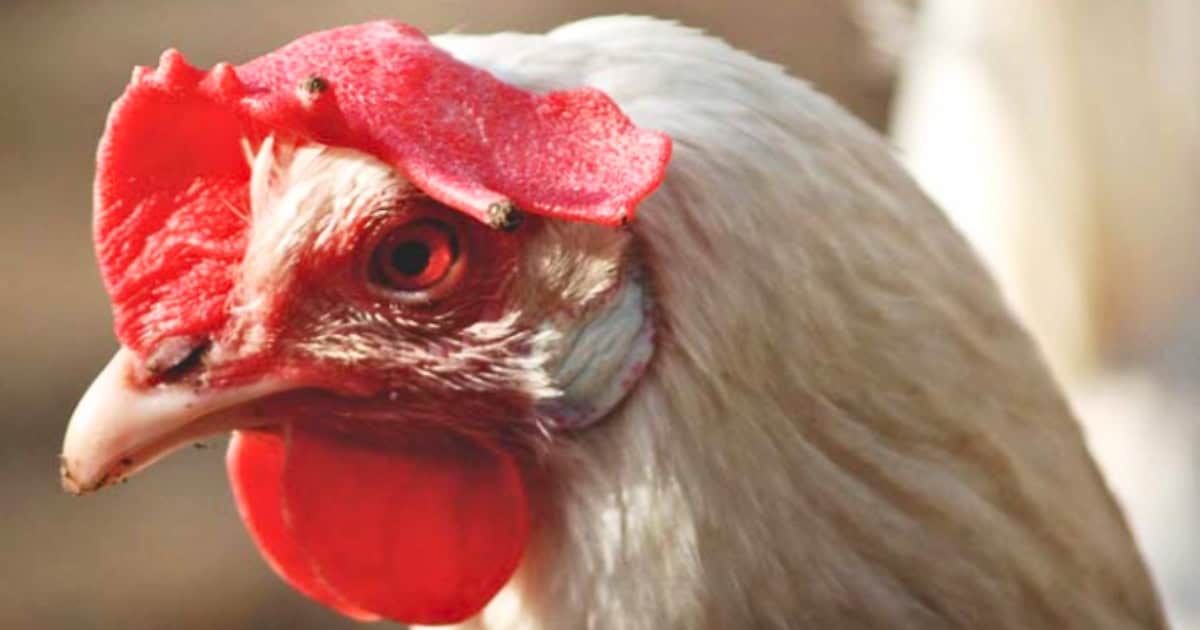
Caring For Your Leghorn Chickens
Watch out for your leghorns in the hot Australian summer.
They handle both hot and cool climates well. All chickens are susceptible to heat stroke so watch out for them in the hot Australian summer.
Leghorns with a single, large comb are not suitable for areas where the winter time is snowy, as their comb is prone to frostbite. If you live in a snowy area, choose the rose comb variety.
Temperament
The Leghorn chicken is a very independent breed. This is because they originated from wild, landrance chickens.
They are shy, flighty and don’t enjoy human contact. This makes them unsuitable for families with small children, who will naturally want to approach or touch the chickens.
If you are looking for a pet chicken your family can interact with then sadly this isn’t the right breed for you. Handling a Leghorn chicken regularly from a very young age can help tame them. But it still won’t make them cuddly or want to follow you around.
Health
The Leghorn chicken breed will mature quickly and has a short life span. They will usually live until they are around 6 years old.
This is common with chicken breeds that lay a high number of eggs. Like all pet birds, the Leghorn chicken is prone to lice and mites.
You will need to check in between their feathers regularly. Speak to your local poultry veterinarian about lice and mite prevention treatments.
Chicken Coop & Nesting Box
Leghorn chickens are a very active breed and will therefore be much happier if given a large area for free ranging during the day.
You will need to provide your hens a chicken coop that is covered and well protected. This gives them a safe place to roost at night time away from predators or a place to run back to during the day if they feel threatened.
Cabana Chicken Coop
The Cabana is a premium chicken coop that is covered and well protected for your leghorn chickens
Most backyard chicken keepers will let their hens out of the coop every day to free range in a large yard. If you are worried about your hens being out in the yard, you could attach a chicken run onto the coop as an extension.
This will give them a protected space where they can run and stretch their wings. Leghorns fly quite well and may perch up in trees or escape over fence lines.
Therefore you will either need to clip their wings or have high fences to keep them in. A Leghorn chicken can be very loud and they are not recommended for an urban setting.
You should only keep them if you have plenty of space and then position your coop away from your fence line to avoid complaints from neighbours.
Leghorn Hens, Roosters & Chicks
Leghorn hens don’t usually go broody. This means they are not suitable to sit on and hatch fertile eggs.
If you have fertile Leghorn eggs, you are better off using an incubator. This is because they have been bred over time to be good egg layers and not good egg hatchers.
They are also not known to be good mothers. So you will need a heat lamp to keep your newly hatched chicks warm.
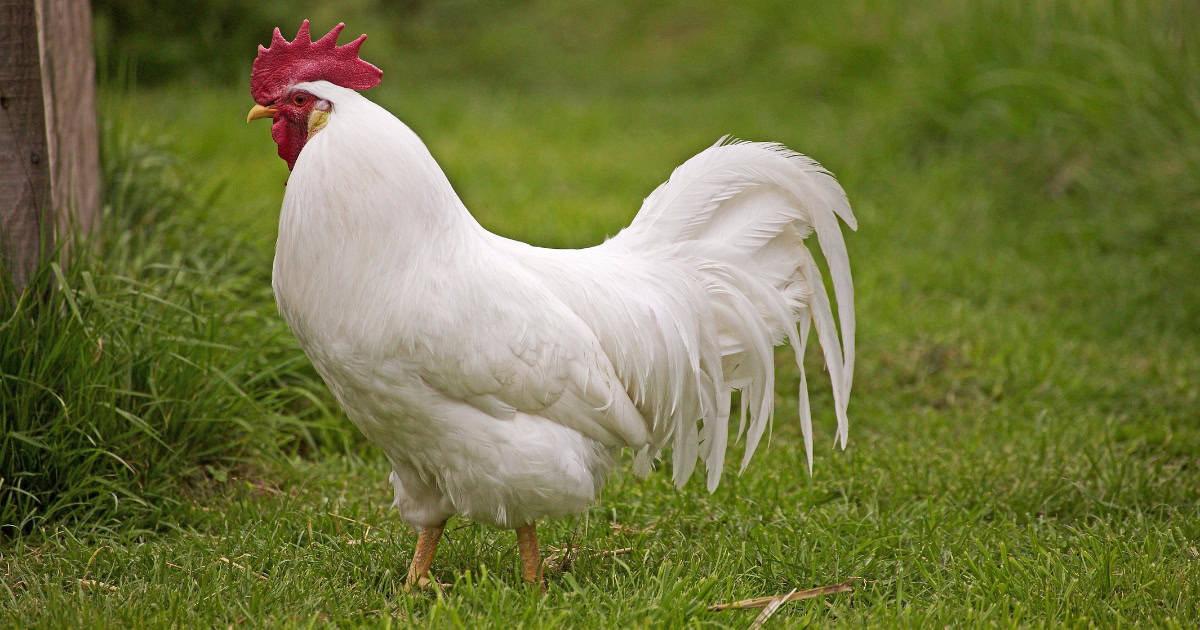
Leghorn Roosters
Leghorn chicks mature very quickly, as they have been bred to start laying eggs as early as possible.
Buying Leghorn Chickens
Leghorn chickens are available in Australia. White Leghorns are the most common variety found.
Where to Buy
The easiest place to find a Leghorn chicken breeder is online. Search for specialist poultry breeders in your area. It may be helpful to search in poultry Facebook groups for recommendations or search on online marketplaces with it filtered to your local area.
Be cautious when buying online. Never send money to someone you haven’t spoken to on the phone or are unsure about.
You could also try contacting poultry associations, a Leghorn club, rural farm supply stores or local bird auctions.
Price
The price for a Leghorn chicken will depend on its age. Prices can also vary based on demand, supply, time of year, location, size and colour.
A Bantam Leghorn is usually more expensive than a standard sized Leghorn because Bantams are not as common.
The White Leghorn is usually cheaper than other colour varieties because it is more commonly found.
Most people will purchase hens when they are Point of Lay, meaning they are about to start laying their first eggs.
For a Leghorn chicken, this is quite young at around 16 weeks old. They will cost you around $50 per hen.
Roosters are usually sold very cheap or even given away for free.
Most backyard chicken keepers don’t want to deal with a rooster – they are louder, more aggressive and can grow sharp spurs on their feet.
This is an example of low demand creating a cheaper price.
Alternatively, you could purchase baby Leghorn chicks. Day old Leghorns will cost around $15 per chick.
This is cheaper than an adult hen but the chicks require a lot more care. They will need to be kept under a heat lamp indoors until they are old enough to move into your outdoor coop.
The very cheapest way to buy a Leghorn chicken is to purchase fertilised eggs. These will usually cost around $50 for a dozen.
This is very cheap however you are not guaranteed all 12 of them will hatch. You will need to keep them in an incubator or under a reliable broody hen.




